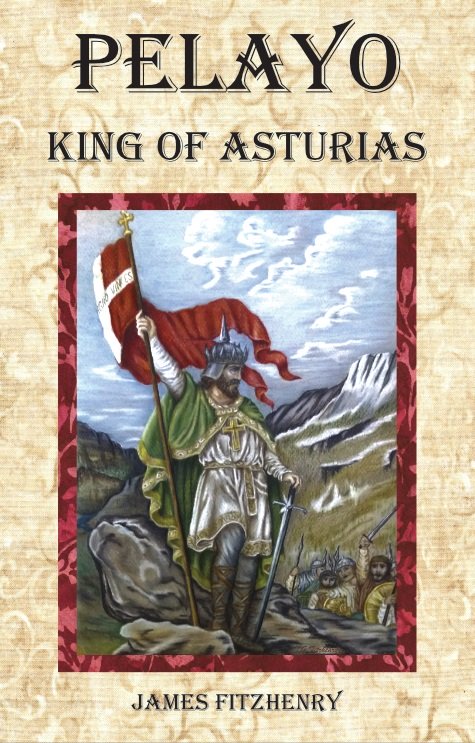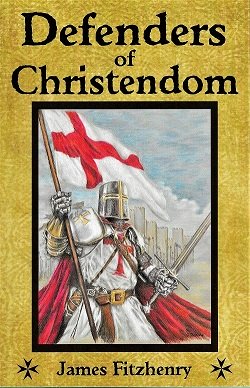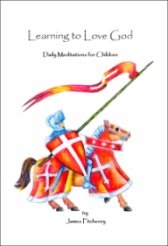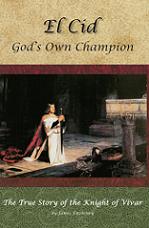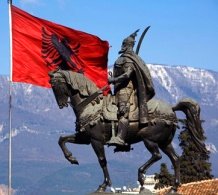
George Kastrioti Skanderbeg, "Iskander"
George Kastrioti Skanderbeg (May 6, 1405 – January 17, 1467), is also known by his Muslim name of Iskander, (Lord Alexander)." He was also known as the Dragon of Albania, and is the national hero of that country. His story is told at length in the new book
Defenders of Christendom.
George was the son of an Albanian lord who had been forced to submit to Murad II, the sultan of the Ottoman Empire. He was still a young boy when he and his three brothers were turned over by his parents to the Muslim empire as part of the practice of devsirme. While his three older brothers were slowly poisoned when they staunchly refused to convert to Islam, George was allowed to live, as he was only a child.
Forced to conform to the practices of Islam, George was subjected to merciless training at which he excelled, proving himself to be both a physically powerful warrior and eventually also a brilliant field commander. Rising quickly through the ranks, he was made bey generalissimo, and entrusted to command a large Muslim cavalry unit. The Ottoman sultan himself honored him by bestowing upon him the name of Iskander, “Lord Alexander,” comparing him favorably to the Macedonian conqueror Alexander the Great.
The Hungarian commander Hunyadi was on campaign against the Ottoman Empire when he came face to face with Iskander at the city of Nish. Unknown to his commanders, Iskander had never truly accepted Islam or forgotten the murder of his heroic brothers. He had also been secretly communicating with Albanian noblemen from his own country, for the Muslim’s had failed to erase the memory of his homeland.
Upon learning of the death of his father, Iskander had decided that he would join the advancing Catholic army, and then fight the Turks to restore Albania. With three hundred Albanians who had been forced to serve the Turks, he defected and fought side by side with Hunyadi. Turning their swords against their Islamic oppressors, they easily defeated the Muslim army.
At this point in his career Iskander was an impressive figure, “tall and slender with a prominent chest, wide shoulders, long neck, and high forehead. He had black hair, fiery eyes, and a powerful voice. So warlike was his nature that he truly needed to wage battle from time to time. He killed more than two thousand Turks with his own hands. He was a master of all weapons, swift and ingenious, a general with a quick and certain gaze, audacious and resolute. Naturally possessed of a fiery temper, anger would go to his head quickly and set his eyes ablaze. But he would dominate his anger, biting his lips until they bled. His courage in battle stemmed from this struggle over his evil passions. All in all, his customs were pure, his manner noble and elevated. Mary was his strength and inspiration.”
Iskander returned to his native land, taking back Kruje castle after tricking the Turkish governor into turning it over to him. He then declared war on his former masters, intending to avenge his country for the atrocities it had been subjected to under the Ottoman Empire. His banner displayed a two headed eagle, an image significant to his own family, but also one that had been used by the Roman Empire. It became a well-recognized emblem in the Balkans, symbolizing the refusal of the Albanian people to submit to Islam. Several of the Albanian princes revolted against their overlords and rallied under Iskander’s banner at Kruje castle, forming the League of Lezhe, and electing Iskander to lead the Albanian army.
Iskander was an invincible opponent of Islam, and the reason for his success was no secret: he “loved the sanctuary of Mary with a devoted, enthusiastic love; and Mary in return, not only made him a model of Christian perfection, but also gave him an invincible power, which preserved not only Albania but also Christendom during his reign.”
There was at this time a miraculous painting in the town of Scutari, which was the capital of Albania. Our Lady of Scutari was an image of Our Lady holding her Divine Son which had been painted on a thin sheet of plaster by an unknown hand. This portrait was venerated and beloved by the faithful Albanian people, and as a child, George Castriota would doubtlessly have visited this shrine. It was Our Lady of Scutari who had consoled and preserved him through all his trials, and now, when he returned to Albania and dedicated his life to her, it was she who made him invincible in battle, the fearsome Dragon of Albania.
Altogether Iskander could field an army no larger than 18,000 men. They were few in number, though Iskander used them effectively, conducting lightning raids against the enemy while building new fortresses. The Ottoman forces in Albania were kept off balance, and induced to widely distribute their troops, stretching them thin over a broad area. This response suited Iskander well, for he could strike with good effect and then retreat to safety into the mountains.
Iskander’s first real test was the battle of Torvioll, which took place in June of 1444. The Ottoman sultan sent an army of 25,000 men into Albania under Ali Pasha, one of his most accomplished commanders.
Iskander, having recently been one of the sultan’s finest commanders, was obviously well acquainted with Ottoman military tactics. He took 15,000 men with him to the plain of Torvioll to meet Ali Pasha, awaiting him for battle at the base of a broad slope. The field was surrounded on both sides with hills and a dense forest, appearing to give the Muslim army a distinct advantage.
When Ali Pasha became aware of Iskander’s poor field position, and observed that his army appeared to number less than 10,000 men, he became overly confident of victory and immediately ordered his army to attack.
Seeing the advance of the awesome Muslim army, some of the Albanians began to give way. Iskander had held men in reserve out of view, and used them now to bolster his intimidated troops and return them to their formation. For Iskander’s plan to succeed, all they had to do was hold their position and fight.
As soon as the armies were fully engaged, 3,000 men Iskander had hidden in the forest suddenly appeared and struck the Ottoman troops in the rear, causing a panic among the Turkish soldiers. The wings of the Albanian army turned at the same time toward the center, attacking on the flanks and doing a great deal of damage. Seeing his army crumble before him, Ali Pasha and his personal guard fled the field. Nearly every Turkish soldier was put to the sword, with only 2,000 taken captive. Of the Albanians, only 120 men were lost.
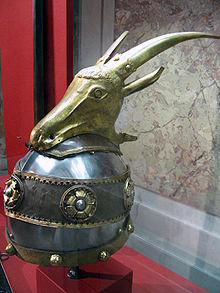
All of Christendom was encouraged by the stunning victory, and Iskander was asked to join a papal alliance in a new Crusade against the Turks. Iskander was prevented from joining the Christian army through a deceitful ruse perpetrated against him by the king of Serbia, so Hunyadi ended up fighting the Ottoman forces without his assistance and were sorely defeated.
The Ottoman Empire was beset by domestic rebellions that diverted the sultan’s attention away from Christendom for a time. In 1449, however, the sultan led an army 200,000 strong into Albania. None of Albania’s strongholds could withstand him, until finally the sultan faced Iskander at Kruje castle. “With matchless strategy Iskander contrived to keep the myriads of his opponents from the walls. With energy almost superhuman, he swept unexpectedly, now here and now there, by night and by day, into the midst of the foe; every swordsman of his band hewed down scores, and his own blade flashed as the lightning and caused Muslim heads to fall like snowflakes where he passed.” When the siege was finally lifted, 20,000 of the enemy lay dead on the field, with the remnant of the Muslim army “pursued with terrific slaughter by the Christians.”
After the battle, Iskander went at once to kneel before the image of Our Lady of Scutari, thanking and publicly praising her for his success. “He was a hero formed in the same school as all those who derive their strength from their devotion to the Blessed Virgin. Like a new Saint Fernando, King of Castile, Scanderbeg was, under the guidance of Mary, as gentle in peace, as he was terrible in war. The good Christian prince was often seen at her feet to beg the protection of his Lady in his greatest afflictions.”
Pope Nicholas V called Iskander “the champion and shield of Christendom,” which was true, although it was the Blessed Virgin Mary who protected her champion and granted him his victories.
Neither treachery nor surprise attacks could defeat Iskander, until finally it seemed to Sultan Mehmet that he might never defeat Iskander on the field of battle. Taking a different approach, he feigned affection for the Albanian prince, offering him his friendship if only Iskander would deliver his son to him as a hostage. Iskander snubbed the Ottoman sultan in writing, signing his refusal, “Skanderbeg, Prince of the Epirotes and Albanians and soldier of Jesus Christ.”
After the death of Hunyadi, in the year 1459, Pope Pius II attempted to gather the Christian princes for a new Crusade under the command of Iskander. His efforts met with utter failure, and his words at the realization echo through the centuries to speak to us now in our own time: “We came full of hope; but we are forced to consider it in vain. We are ashamed that the lukewarmness of Christendom is so great. Some run after their pleasures, others are enchained by avarice. The Turks are ready to face death for their doctrine, but we tolerate neither the least expense nor the most insignificant discomforts for the Cause of the Holy Gospel.”
There were many more battles that Iskander fought against the Turk, alone and unaided by a thankless Christendom. With the aid of Our Lady of Scutari he remained invincible, fighting to preserve a Christendom that neglected him.
In 1466 Iskander learned that the Ottoman sultan was advancing toward his homeland once again with an army of 200,000 men. He and his fellow Albanians had borne the brunt of Christendom’s battles, and it had nearly ruined his kingdom. The Dragon of Albania went to Rome seeking assistance from the pope.
These were his very words: “After twenty-three years of unceasing war, I present myself here together with the warriors that remain. Ours is a state exhausted by so many battles; Albania is a body of which no member remains unwounded; only a few drops of its blood remain to be shed for the Christian world. Alas, come to our aid, otherwise the last champion of Jesus Christ will soon disappear from the other side of the Adriatic!”
The pope gave what he could, but the assistance was merely financial, and not enough to meet Iskander's need. It is almost as if the world is not worthy of such men. All the members of Albania had been scourged. It remained now only for the heart to be pierced.
Iskander went back to the castle of Kruje, which was then surrounded by Mehmet’s army. The siege lasted for months, with great toll on both sides. Iskander, along with his best warriors, remained outside the walls so that they could arrive at any location unexpected to antagonize and harry the Turkish besiegers.
After several months Mehmet returned to Constantinople, leaving an army of 80,000 to continue the siege. With only 13,000 men remaining, Iskander attacked the Turks so violently that their leader was killed and the rest driven to a panicked retreat.
“The prince and unvanquished warrior, whose strength of soul gave his compatriots fortitude to throw off their lethargy, courage to rise up against the oppressive infidels, daring to despise death and thus expel them from their country, moved his subjects not only by example but also by his unbreakable faith, his ardent charity, and his unshakable hope...Scanderbeg was God’s sword against the enemies of the holy Catholic Faith, the impregnable defensive wall protecting his realm.”
Physically exhausted from his labors, and sensing that his death was near, Iskander went one last time to visit Our Lady of Scutari at her shrine, and then retired to the city of Lesh to die. There, on his deathbed, he made his last confession, and received Holy Viaticum.
Mehmet had his spies in Albania, and was thus fully aware that Iskander was dying. He sent another large army into Albania to attack Lesh, expecting to conquer all of Albania once Iskander had died.
The sounds of battle, and the cries of despair coming from the startled populace reached Iskander. “Hearing the shouts, the dying man’s eyes opened. Color returned to his cheeks. The perspiration of agony disappeared. Iskander ordered his horse and weapons brought to him. Then, a great battle ensued at the gates of Lesh. The Dragon of Albania had pushed death aside and carried it instead to the enemies of Christendom.”
The Muslims were routed and completely defeated after a bloody battle. Iskander gave thanks to the Blessed Virgin, and returned in triumph to his palace. Once there, he set aside his weapons and went back to his bed where he laid down and soon gave up his soul to God. He had ended his life as a powerful defender of the Catholic faith and of Christendom, and his battle-standard became the flag of his native Albania.
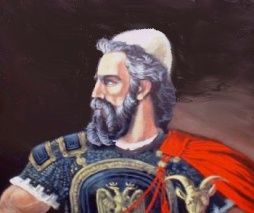
© copyright James Fitzhenry 2011
Quotations from "The Mother of Good Counsel of Genazzano"
Return to Hero Stories
Return to Roman Catholic Saints Homepage
NOW AVAILABLE!!
Pelayo's resistance initiated the nearly 800-year-long Reconquista to take back his country from the ruthless invader who had conquered his homeland and sought to erase his culture and his faith. His actions would lay the foundations of a Kingdom for Christ that would eventually reach around the world and spread the Catholic faith to millions of souls. Read more...
Please help us continue to bring high quality books to our readers at the lowest possible price! Click the link below! Thank you!
Now Available!
Defenders of Christendom
Battles - Honor - Miracles!
This book is filled with
amazing stories of little-known
Catholic heroes presenting
spectacles of bravery and
valor never exceeded in all the annals of history.
Demonstrating his
gallantry through daring feats
of arms, the knight's faith,
coupled with his marvelous
courage, made him nearly
invincible on the field
of battle.
read more . . .
Learning to Love God
Especially for young children -
Now available as an e-book!
Available for only $2.99 US
as an ebook download.
Also available in Spanish!
The exciting life story of
the holy Catholic knight
known as El Cid!
The amazing life story of the
little known incorrupt saint
- King Fernando III!
This highly acclaimed book is
inspirational to young men
and a guide to building a strong
masculine, Catholic character!
Also available as softback!



